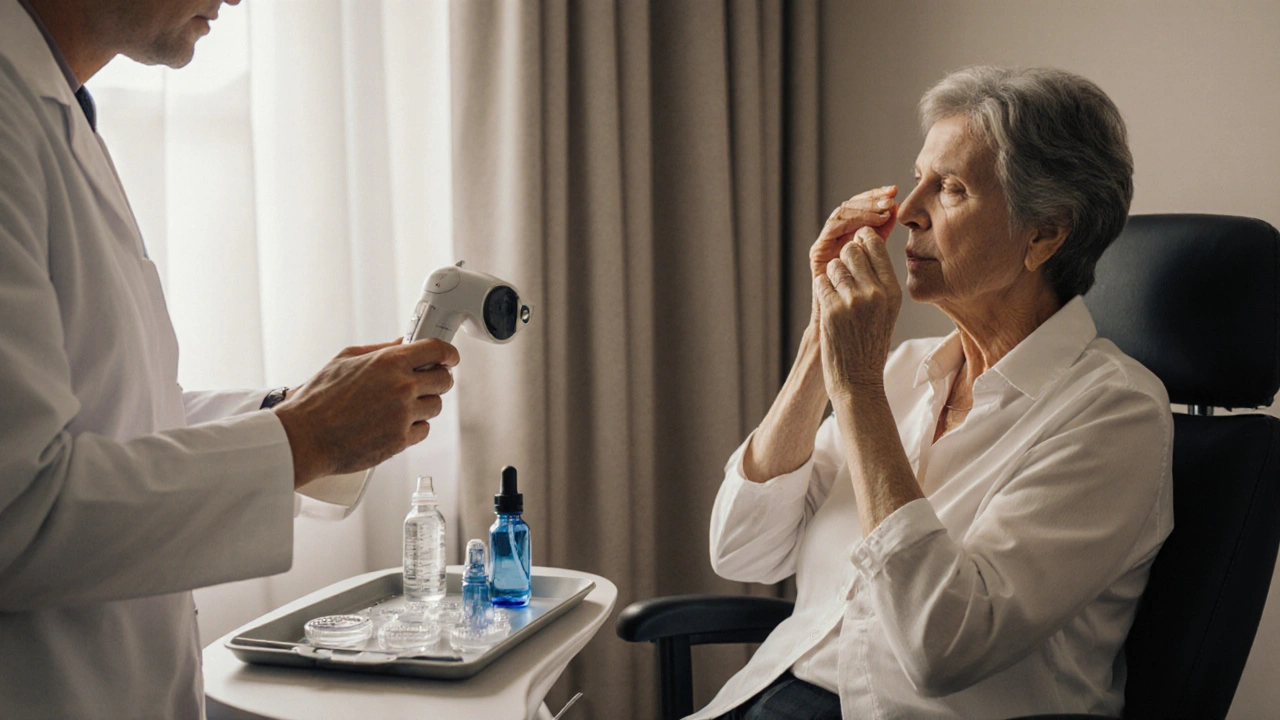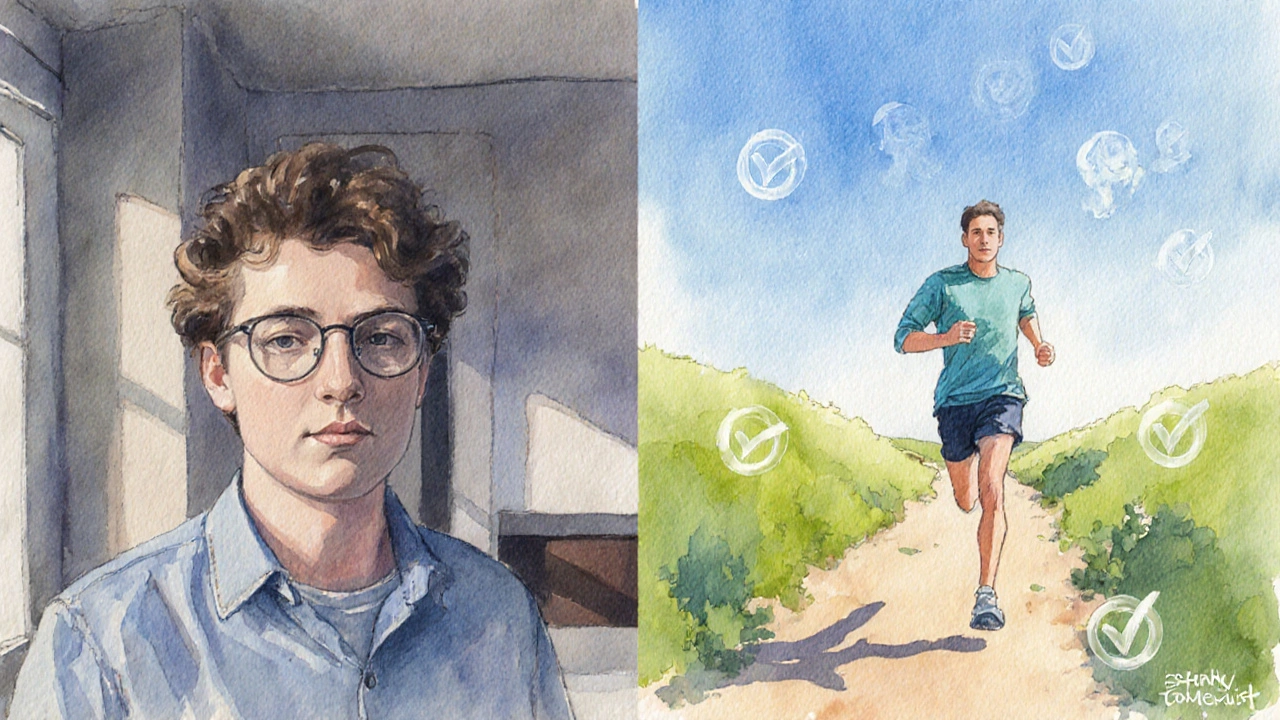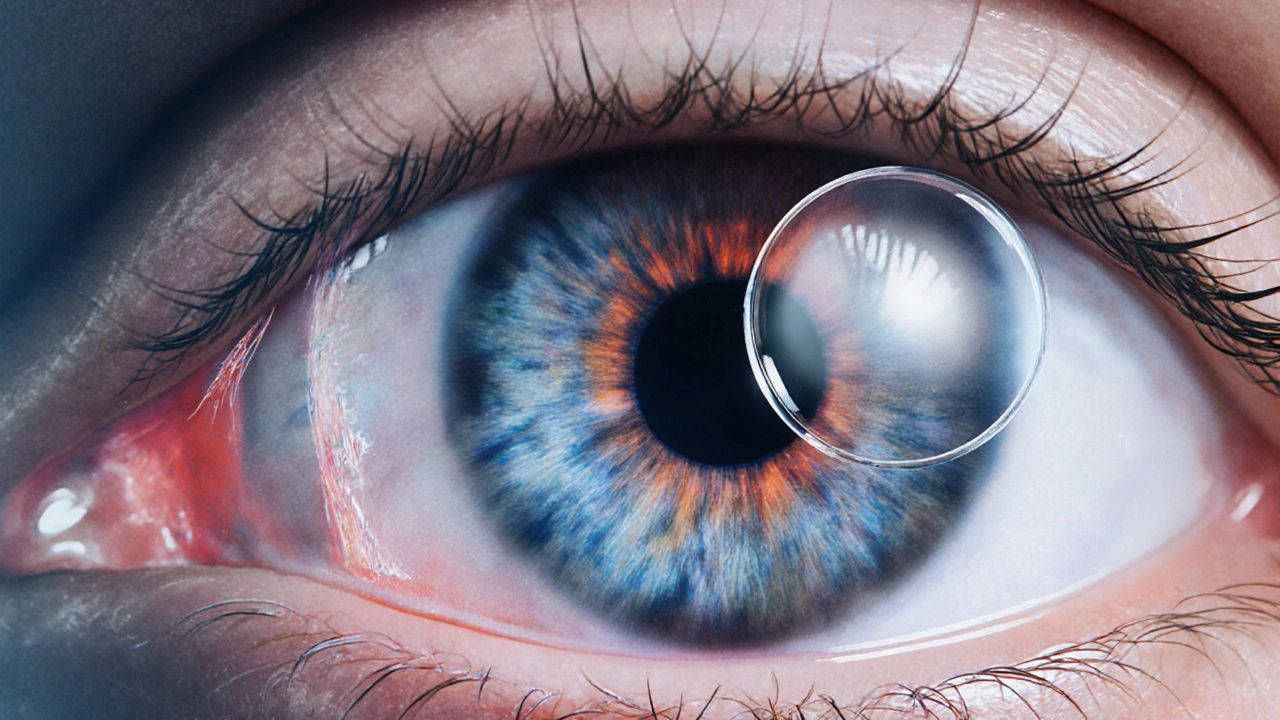Living with Glaucoma is a chronic eye condition that damages the optic nerve, often linked to high intraocular pressure. If you also love the freedom of contact lenses, you’re probably wondering whether they’re safe, how they affect your disease, and what steps you can take to protect your sight. This guide breaks down the medical facts, practical tips, and alternative options so you can make an informed decision without sacrificing comfort.
Understanding Glaucoma and Its Impact on Vision
Glaucoma isn’t a single disease; it’s a group of disorders that increase glaucoma contact lenses risk for optic nerve damage. The most common type, primary open-angle glaucoma, gradually raises intraocular pressure (IOP) because fluid (aqueous humor) outflow becomes sluggish. Over time, the pressure pushes against the optic nerve fibers, leading to peripheral vision loss that can progress to total blindness if untreated.
Key signs include blurry edges, halos around lights, and difficulty adapting to low light. Diagnosis relies on a thorough eye exam, visual field testing, and IOP measurement performed by an ophthalmologist.
Can You Wear Contact Lenses with Glaucoma?
The short answer: many people with glaucoma can safely wear contacts, but it depends on the type of lens, the health of the cornea, and how well your IOP is controlled. Here’s what matters most:
- Corneal health: Glaucoma itself doesn’t damage the cornea, but some medications (especially those with preservatives) can cause dryness or irritation that makes lens wear uncomfortable.
- IOP control: If your pressure is well‑managed with eye drops, laser therapy, or surgery, the added mechanical pressure from soft lenses is usually negligible.
- Lens material: Modern silicone‑hydrogel lenses allow more oxygen to reach the cornea, reducing hypoxia‑related swelling that could affect IOP readings.
Always get a green light from your ophthalmologist before starting or switching lenses.
How Contact Lenses Might Influence Intraocular Pressure
Contact lenses can affect IOP measurements in two ways:
- Measurement artifact: Some tonometers (devices that gauge pressure) give slightly higher readings when a lens is in place because the lens adds a thin layer of resistance. Your doctor may ask you to remove lenses before a reading.
- Physical effect: Very tight-fitting lenses can temporarily increase pressure on the eye’s surface, but this effect is usually short‑lived and clinically insignificant for soft lenses.
Rigid gas permeable (RGP) lenses sit on the cornea rather than soaking into it. While they allow excellent oxygen flow, a poorly fitted RGP can cause localized pressure spikes, so they’re generally not first‑choice for glaucoma patients unless a specialist fits them precisely.

Best Practices for Safe Lens Wear
Following a strict routine minimizes risk and ensures your glaucoma treatment stays effective:
- Consult your ophthalmologist: Bring a list of all eye drops, especially those with preservatives, and discuss any dryness or irritation.
- Choose high‑oxygen lenses: Silicone‑hydrogel lenses with a Dk/t value above 100 are ideal for prolonged wear.
- Maintain hygiene: Wash hands with neutral soap, use fresh solution daily, and never top‑up old solution.
- Monitor corneal health: Look for redness, excessive tearing, or blurred vision. If anything feels off, remove lenses and contact your eye doctor.
- Schedule regular check‑ups: Every 3-6 months, let your ophthalmologist re‑measure IOP and evaluate lens fit.
Comparing Contact Lenses and Prescription Glasses for Glaucoma Patients
| Factor | Contact Lenses | Prescription Glasses |
|---|---|---|
| Oxygen delivery to cornea | High with silicone‑hydrogel (up to 150 Dk/t) | Not applicable |
| Impact on IOP measurement | May require lens removal for accurate reading | No interference |
| Convenience for active lifestyles | Excellent - no frames, better peripheral vision | Limited - frames can fog or slip |
| Risk of corneal irritation | Possible if lenses dry or fit poorly | None |
| Cost (annual) | £150-£250 (including solutions) | £60-£120 for lenses |
Glasses provide a hassle‑free option that never interferes with IOP checks, but they can be cumbersome for sports or windy conditions. Contacts give you a natural field of view and are great for weather‑independent activities, as long as you follow the safety checklist.

When to Consider Surgical or Laser Alternatives
If your IOP remains stubbornly high despite medication, you might need a procedure such as laser trabeculoplasty or a filtering surgery (trabeculectomy). These treatments lower pressure by improving fluid outflow and don’t affect your ability to wear lenses afterward-in fact, many patients report improved comfort because they can reduce or stop preservative‑laden drops.
Discuss with your ophthalmologist whether a surgical route could also simplify your daily eye‑care routine.
Quick Checklist for Glaucoma Patients Using Contact Lenses
- Get clearance from your ophthalmologist before starting lenses.
- Choose silicone‑hydrogel lenses with high oxygen permeability.
- Replace lenses as recommended (daily, bi‑weekly, or monthly).
- Use preservative‑free artificial tears if drops cause dryness.
- Remove lenses before any IOP measurement appointment.
- Schedule eye exams every 3-6 months for pressure checks and lens fit assessment.
- Report any redness, pain, or sudden vision changes immediately.
Following these steps helps keep both your vision and eye health on track.
Frequently Asked Questions
Can I wear daily disposable contacts if I have glaucoma?
Yes, daily disposables are often the safest choice because they eliminate solution buildup and reduce the risk of infection. Just make sure they’re silicone‑hydrogel and approved by your ophthalmologist.
Do glaucoma eye drops affect contact lens comfort?
Many drops contain preservatives like benzalkonium chloride, which can dry out the ocular surface. Switching to preservative‑free formulations or using lubricating drops can improve comfort.
Will wearing contacts raise my intraocular pressure?
For properly fitted soft lenses, the effect on IOP is negligible. However, tight‑fitting rigid lenses can cause temporary spikes, so a thorough fit is essential.
Is it okay to wear contacts while using laser trabeculoplasty?
Yes, after the laser treatment’s recovery period (usually a few weeks), you can resume wearing contacts if they’re comfortable and your IOP stays stable.
What should I do if I experience redness while wearing lenses?
Remove the lenses immediately, rinse with sterile solution, and contact your ophthalmologist. Redness can signal infection or an allergic reaction that needs prompt attention.


Comments
Manisha Deb Roy
Hey folks, if you’re juggling glaucoma meds and contacts, keep your drops preservative‑free when possible – it’ll cut down on dryness. Also, schedule IOP checks before you pop in lenses, because the tonometer can read a bit high with them on. Stick to silicone‑hydrogel lenses with a Dk/t above 100 for max oxygen, and you’ll stay comfy.
October 8, 2025 at 17:45
Helen Crowe
Alright, let’s talk about the ocular surface dynamics – the tear film breakup time can be compromised by BAK‑laden drops, which in turn affects lens wettability. Opt for preservative‑free lubricants and consider daily disposables to minimize bio‑film accumulation. Your corneal epithelium will thank you, and the pressure readings stay accurate.
October 12, 2025 at 07:05
Anthony Aspeitia-Orozco
Living with glaucoma while wearing contacts is a balancing act that many patients master with the right knowledge and routine.
First, understand that the disease itself does not attack the cornea, but the medications you use can create a hostile environment for lens wear.
Preservative‑free artificial tears act as a buffer, maintaining the tear film’s lipid layer and preventing micro‑abrasions.
Choose high‑oxygen silicone‑hydrogel lenses; their Dk/t values often exceed 150, which supplies the cornea with enough oxygen even during extended wear.
When you schedule your ophthalmology appointments, ask to have your lenses removed before the tonometry so the IOP reading isn’t skewed by the lens’ resistance.
If you notice any redness, increased tearing, or a gritty sensation, remove the lenses immediately and give your eyes a break.
Regular follow‑ups every three to six months allow the doctor to monitor both pressure and corneal health, catching issues before they become serious.
Some surgeons report that after laser trabeculoplasty, patients can reduce the frequency of drops, which in turn lowers the risk of lens‑related dryness.
For those who prefer not to wear contacts, prescription glasses with anti‑reflective coating are a safe alternative that never interferes with measurements.
However, glasses can be a nuisance during sports or windy conditions, so the convenience of contacts often outweighs the minimal risk when managed correctly.
Remember that tight‑fitting rigid gas‑permeable lenses can cause transient pressure spikes, so only a specialist should fit them.
Soft lenses, especially daily disposables, are generally neutral to IOP and are the safest bet for most glaucoma patients.
If you’re on multiple drops, keep a written list and share it with your optometrist; some combinations can exacerbate ocular surface inflammation.
Invest in a good contact case and replace your solution regularly-never top‑up old solution, as bacterial growth can compromise eye health.
Finally, stay proactive: educate yourself about the signs of infection and never ignore sudden vision changes.
By integrating these habits into your daily routine, you can protect your sight while enjoying the freedom that contacts provide.
October 15, 2025 at 20:25
Adam Dicker
Totally agree, Manisha! I’ve been using daily silicone‑hydrogel disposables for a year and haven’t had a single IOP reading anomaly-just make sure the doc does the “no‑lens” check.
October 19, 2025 at 09:45
Molly Beardall
That’s an over‑kill, these drops r totally fine.
October 22, 2025 at 23:05
Brian Pellot
Quick tip: keep a spare pair of glasses in your bag for any unexpected lens day-switching out is painless and you won’t miss an IOP appointment.
October 26, 2025 at 12:25
Patrick McCarthy
Nice suggestion Brian we often forget the backup especially when traveling abroad
October 30, 2025 at 01:45
Geraldine Grunberg
Indeed, having a spare pair is essential; it also reduces the temptation to push through discomfort with contacts, which can lead to complications!
November 2, 2025 at 15:05
Elijah Mbachu
Just a heads‑up for anyone using multiple glaucoma drops: some preservatives can build up on the lens surface and cause haze over time, so swapping to a preservative‑free regimen can keep your lenses crystal clear.
November 6, 2025 at 04:25
Sunil Rawat
Thanks Elijah - in India we often rely on generic drops, so we’ll try to look for preservative‑free options to keep our lenses comfy.
November 9, 2025 at 17:45